There’s nothing more fun than reminiscing about the early days of video games with pixel art. However, despite its simple style, creating pixel avatars and other images from scratch isn’t easy.
The good news is that AI can now generate pixel art or 8-bit art from text prompts and existing images. And it only takes a few minutes.
Looking for the best AI pixel art generator?
After testing the top tools, here are five that have delivered great results.
1. NightCafe – Best overall AI pixel art generator
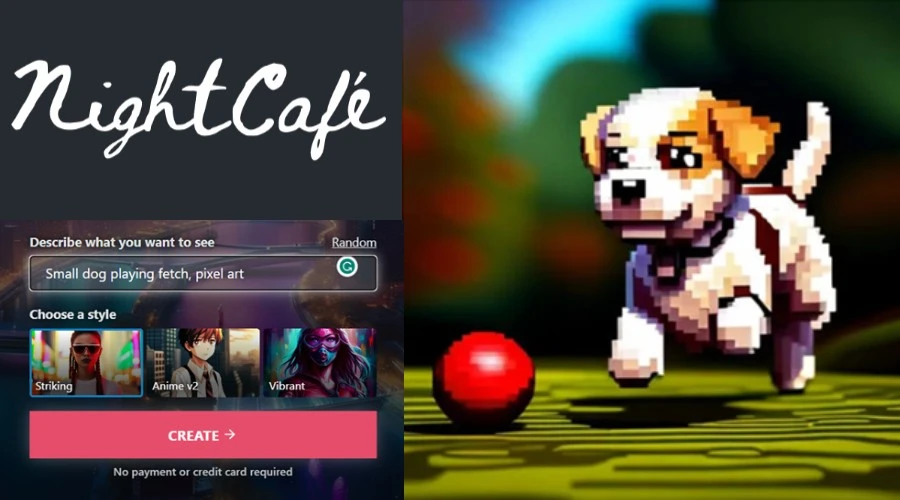
NightCafe’s AI Art Studio offers several fun ways to create pixel art. The first method is to use a text prompt that describes the image you want. Surprisingly good from the start.
Just typing “little dog playing fetch, pixel art” produced the following:
You can choose from several preset styles, some of which are suitable for pixel art. For example, impressive or vivid expressions are effective. However, to get the exact style, you need to add the descriptor “pixel art” to the prompt.
Because NightCafe uses stable diffusion as its base model, it can provide very detailed prompts for fine-tuning images.
Second, you can use image-to-image, which allows you to take an existing image and turn it into pixel art using AI. This is perfect for turning your avatar, profile picture, or yourself into a character asset.
NightCafe provides users with 5 free credits per day. Alternatively, you can sign up for a premium plan to generate even more credits and unlock advanced features.
2. Fotor – Best AI pixel art generator with mobile app
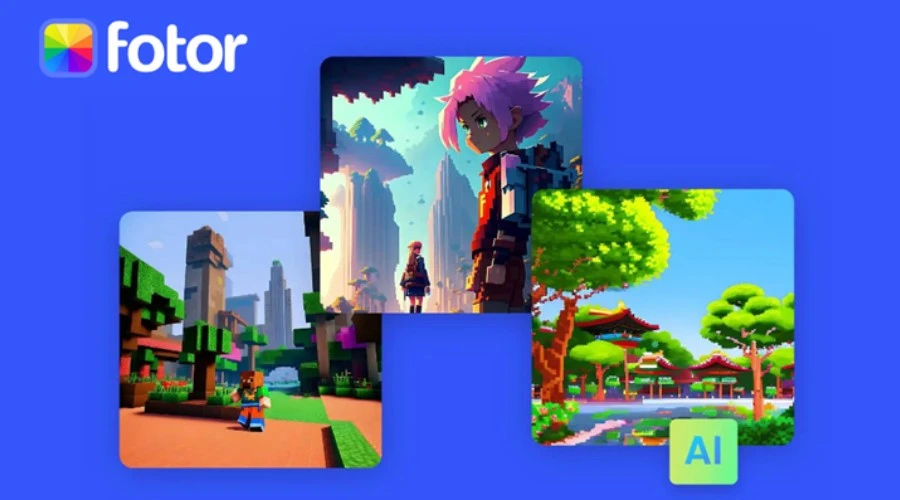

Fotor’s suite of photo editing tools lets you convert existing images into pixel art the traditional way, or generate new art from scratch using AI text prompts.
The first one is perfect for pixelating your own or favorite photos, and the second one is great for completely new ideas. Why not combine both to create something completely unique?
Fotor recommends the term “pixel art” or a specific number of pixels, such as 8, 16, or 32 bits, as a prompt. You can also apply additional styles by selecting a preset in the left panel. The only tip is to keep it cartoonish and avoid photorealism, which is not a pixel art style.
The editor gives you full control over the aspect ratio and allows you to easily regenerate or add to your prompt until you get the results you want.
All new users get enough free credits to create some images. You can then pay for credits or pay for a long-term plan. Fotor is praised for offering a mobile app alongside its web-based generator.
3. Adobe Firefly – Best Desktop AI Pixel Art Generator
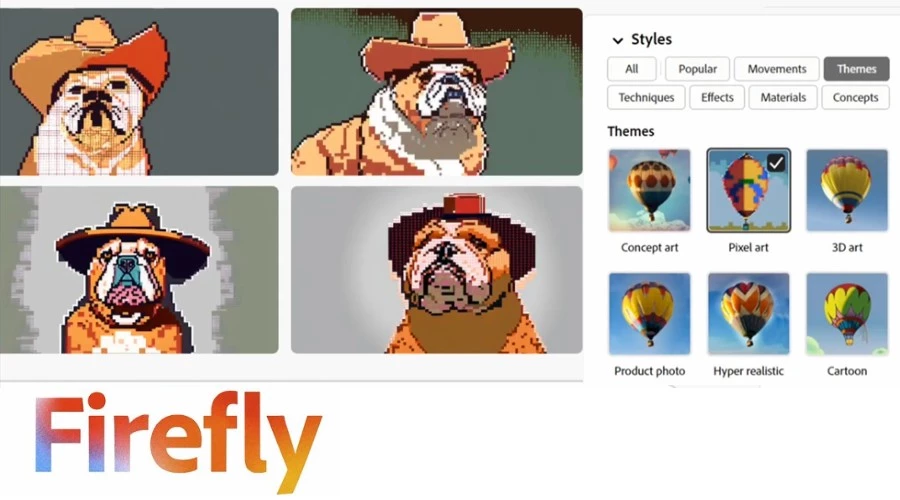

Adobe’s new take on generative AI is perfect for fans of pixel art. Firefly creates great results from basic prompts and has preset pixel art filters in its toolbar.
Just enter a description in the box at the bottom and four initial images will be created for you. The settings on the right apply immediately to all images, and you can modify the prompt at any time.
Don’t forget to turn on “Art” as the content type. That way you will always get good results with pixel art style. You can also select the relevant aspect ratio at the top.
Firefly also allows you to use existing images as part of its “Generative Fill” feature. It’s primarily intended for completing or adding to your own art, but it can also be used to create pixel art from photos and images you already have.
Although still in beta stage, the software is flawless and already has a thriving community online.
4. PixelVibe – The best AI pixel art generator for game assets
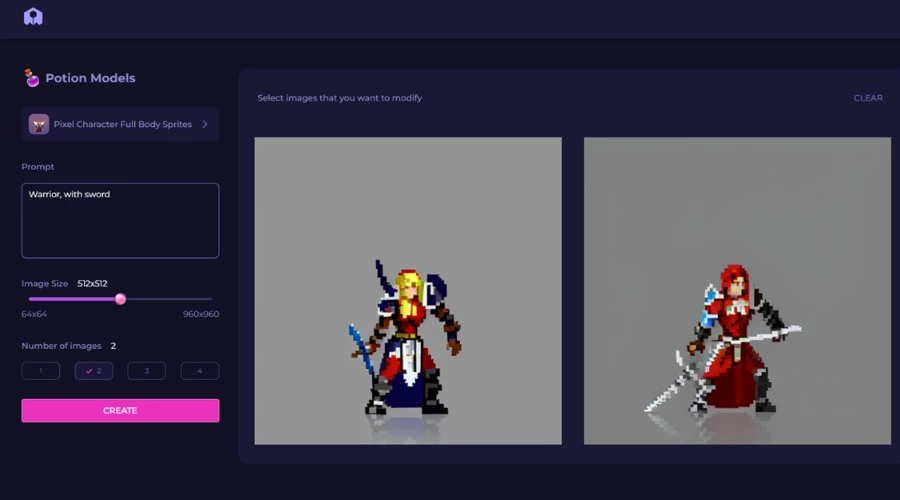

All under the name of newcomer PixelVibe. Pixel art is the company’s specialty. This AI is part of a fledgling game creation suite called Rosebud AI Gamemaker. This means character sprites, tiles, icons, and other game assets are included in the preset.
Alternatively, you can create your own descriptive prompt by separating key elements with commas. How about “Warrior with a Sword”?
PixelVibe supports up to 4 images at once and allows you to set the image size before generating the image. You can then change the pixel size, remove the background, or revibrate to start the process again.
Currently, it only supports text-to-image conversion, so you won’t necessarily be able to create your own caricatures, but those features may come later.
It is in beta stage, so users can get started for free. It will take some time to process, but the final result will look great.
Serious developers can request API access for additional options such as AI training on custom images.
5. MidJourney – The best AI pixel art generator for AI enthusiasts
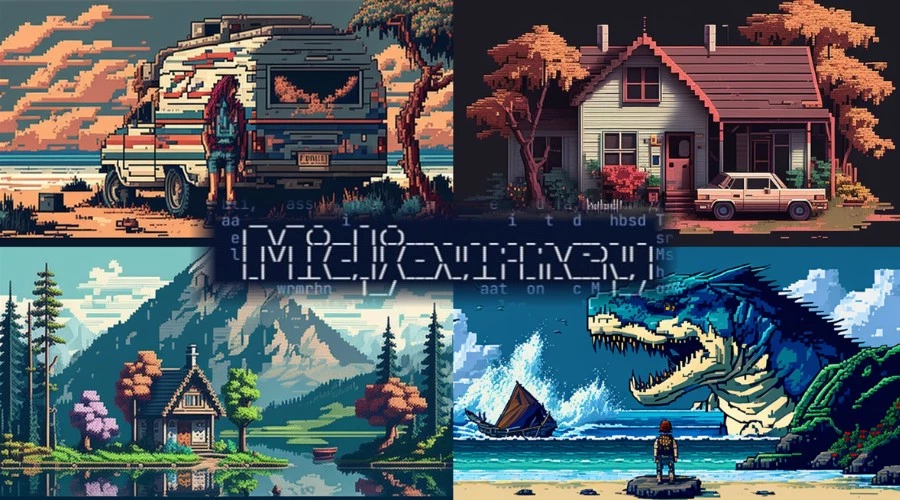

All of Midjourney’s power lies in its prompt. Rather than forcing users into a particular style, it learns from what you and other users want. That said, it may be more difficult to master, but once you master it, you’ll get great results.
Luckily, pixel art is a well-trodden path, and all you need to get started is use terms like pixel art, pixelscape, or old console terms like SNES graphics.
Style is important, but if you want some authenticity, you can also limit your color palette using phrases like Atari palette or Gameboy palette.
More specifically, adding 8 or 16 bits to the end strengthens the prompt.
Of course art is art. If you’re creating an avatar or poster, feel free to be as creative as you want. However, game developers and those working within fixed media may have more success using Midjourney as a starting point.
conclusion
Whether you want to pixelate yourself for a social media avatar or create completely unique artwork, artificial intelligence has your back.
The best AI pixel art generator for you depends on your goals. PixelVibe is promising for game developers, but the easiest options for the average web user are NightCafe or Fotor.
If you prefer a desktop, use Adobe Firefly. Meanwhile, AI enthusiasts will find much more to gain from Midjourney.


